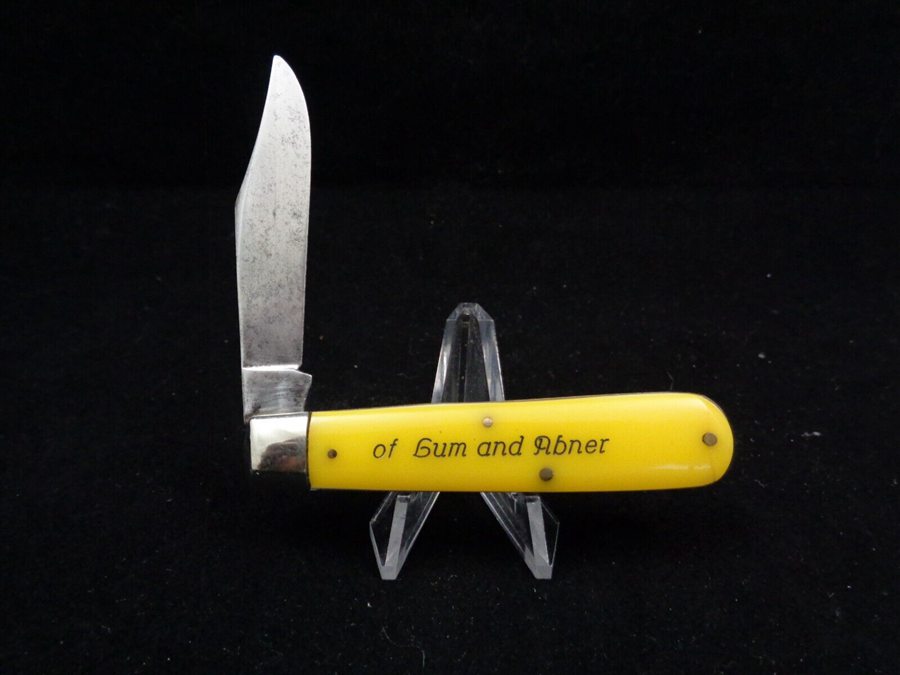Antique knives hold a special place among collectors as they represent a fascinating piece of history, with some dating back hundreds of years. Each knife has a story to tell, often reflecting the era and culture it comes from. As you delve into the world of collecting antique knives, you’ll want to develop your skills in identifying and valuing these unique and fascinating items.
To spot antique knives, pay attention to details like thick metallic blades, wood or metal handles, and unique carvings. Handmade imperfections and metal sheaths can also provide clues to a knife’s age and origin. Some of the most valuable antique knives are weapon-like or dagger style with bare metal, wood, or black handles. However, even intricately carved knives with composite gold or silver blades can fetch a high price.
Aside from examining physical properties, you should learn about maker’s marks and distinctive symbols that can uncover the knife’s history and its significance in the world of antiques. These marks can range from names, initials, small illustrations, logos, series of numbers, or lines. Remember, part of the fun of collecting antique knives is learning the stories they’ve lived, and proper identification is the first step in their journey with you.
Table of Contents
Identifying Antique Knives
Markers and Brands
When identifying antique knives, the first thing you should look for are maker’s marks or distinctive symbols. These marks can range from a name to initials, a small illustration or logo, a series of numbers, or even a few lines. Brands like Remington and Bowie are known for their vintage knives, and their marks will help you verify the authenticity of a piece.
Handle Materials & Their Valuation
The materials used for the handles of antique knives can impact their value. Some common handle materials you may find include:
- Wood: Antique knives with wooden handles often have significant craftsmanship and are valued more than those with synthetic materials.
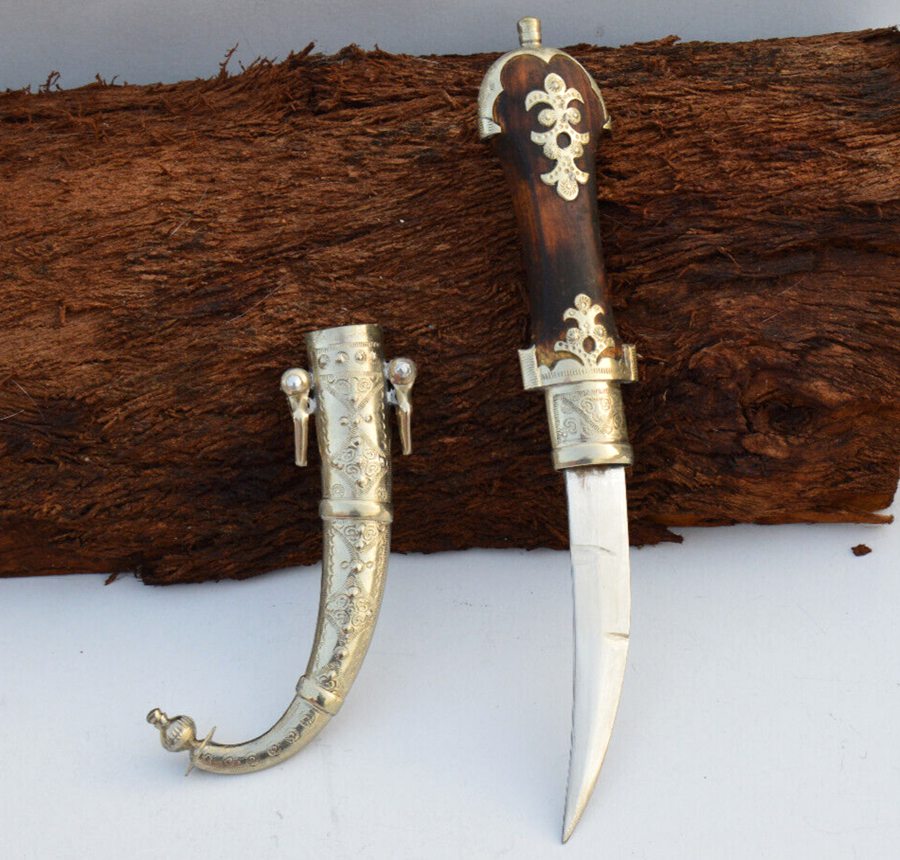
- Bone: Bone handles are considered more valuable than wood, due to their durability and unique appearance.
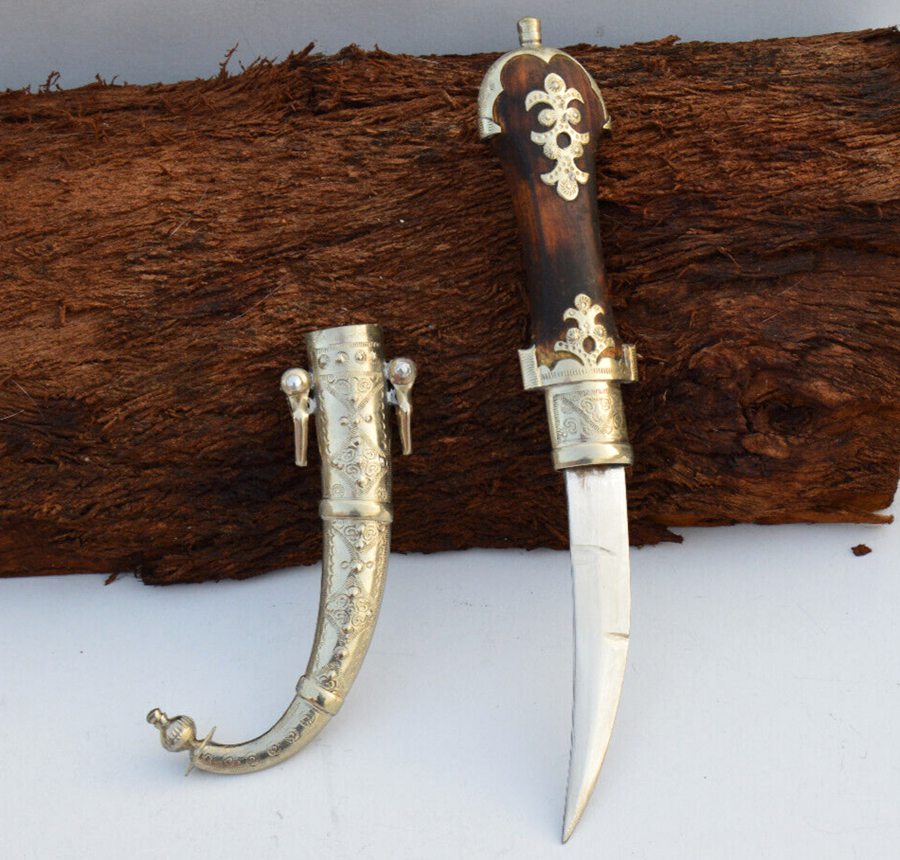
- Ivory: Knives with ivory handles are even more valuable, as they demonstrate a high level of craftsmanship, and ivory is an increasingly rare material.
- Metal: Antique knives with metal handles, particularly those made of silver, gold, or other precious metals, are exceptionally valuable due to the material’s intrinsic value.
When evaluating handle materials, pay close attention to the craftsmanship and detail as well. Carvings, engravings, or other decorative features can further increase the value of a knife.
Blade Styles & Their Valuation
Another important aspect of identifying and valuing antique knives is the blade style. Some common blade styles and their respective values include:
- Pocket knives: These knives usually have one or more folding blades and are typically valued based on their age, condition, and rarity.

- Dagger knives: These knives have a double-edged blade ideal for thrusting and are often valuable due to their unique design and historic significance.
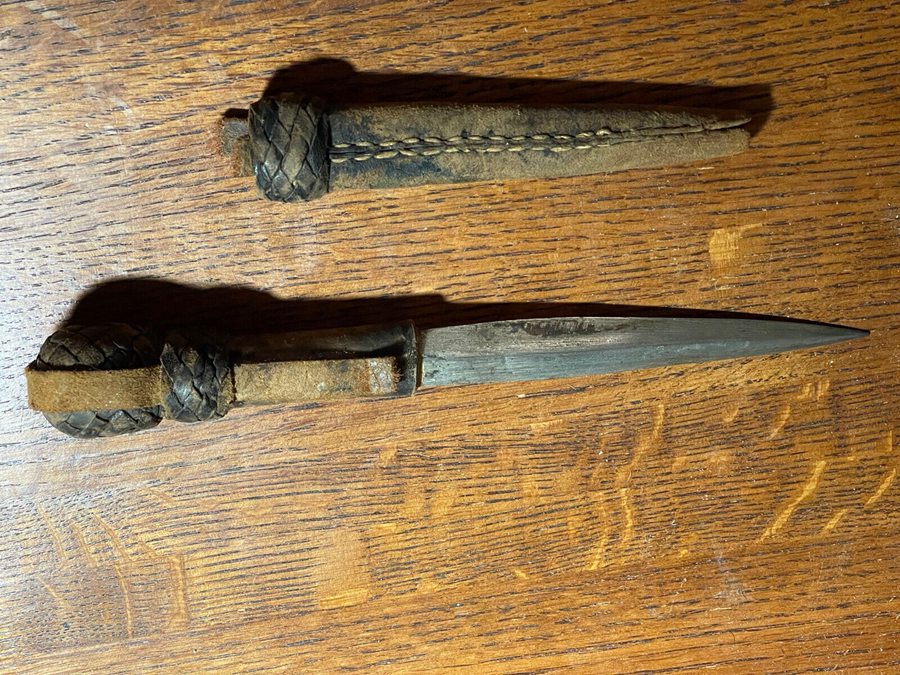
- Vintage Bowie knives: Known for their curved blade with a sharp, concave edge, Bowie knives are often quite valuable and sought after by collectors.
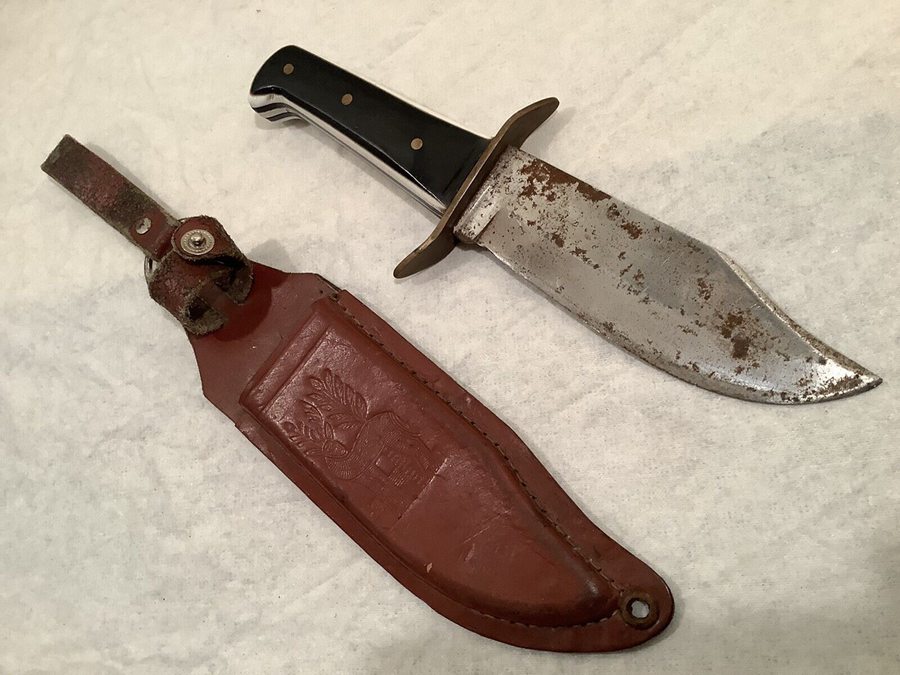
To make your valuation process easier, refer to the table below for an overview of different blade styles and their associated values.
| Blade Style | Value Range |
| Pocket knives | $50 – $500 |
| Dagger knives | $150 – $1,000 |
| Vintage Bowie knives | $250 – $2,500 |
Remember to consider the knife’s condition, age, and rarity when determining its value. Antique knives in pristine condition with clear maker’s marks are more valuable than those with significant wear or damage.
Popular Antique Knife Brands & Their Valuation
In this section, you’ll learn about the popular antique knife brands and their valuation. We’ll cover Case Knives, Remington, Winchester, and Queen. Understanding the values of these knives can help you make informed decisions when it comes to buying, selling, or collecting antique knives.
Case Knives
Case is a well-known brand in the world of collectible knives. Established in 1889, they have been producing high-quality knives loved by collectors around the world. Some of the most sought-after Case knives include:
- Case tested knives (1920-1940)
- Case XX knives (1940-1950)
To determine the value of a Case knife, examine the following factors:
- Age: Older knives tend to have higher values.
- Condition: Well-preserved knives with minimal wear are more valuable.
- Rarity: Limited edition models or knives produced during a specific timeframe have higher values.
Remington
Remington is another respected brand in the antique knife market. Their knives, which were primarily produced between 1920 and 1940, are known for their quality and durability. Some popular types include the Remington Bullet Knife and the Remington R1123 Trapper.
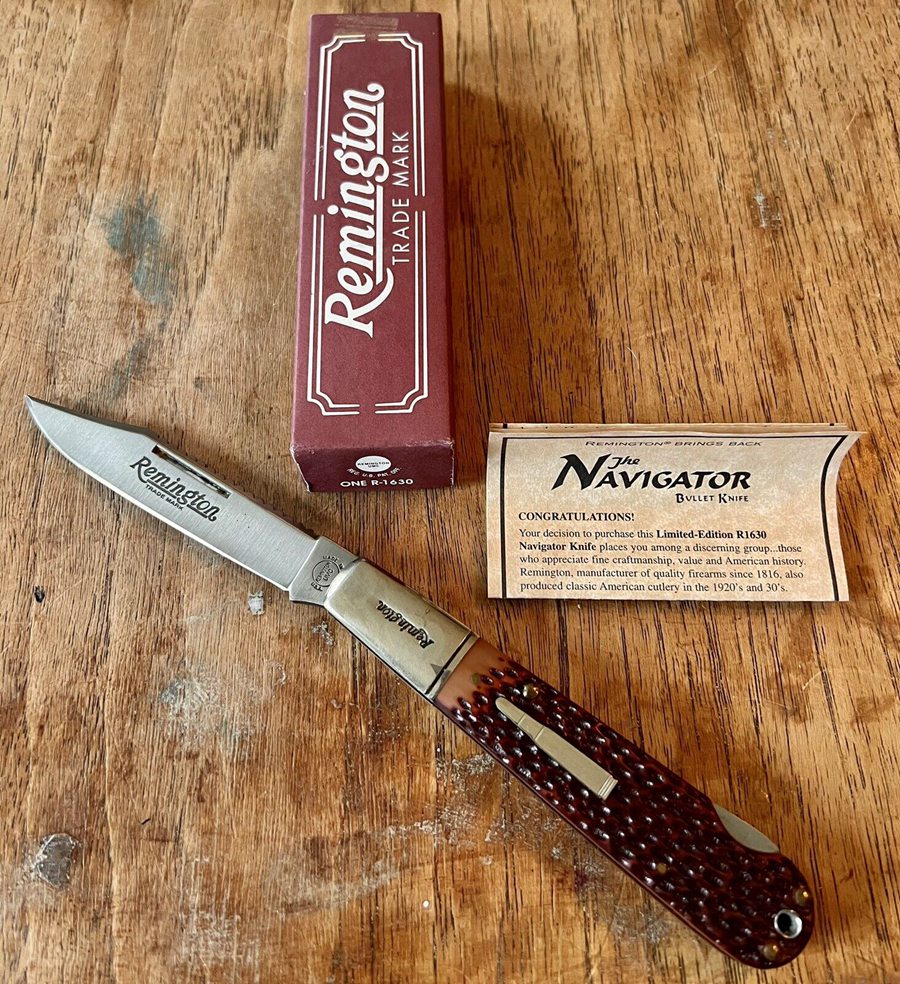
When estimating the value of a Remington knife, consider the following:
- Age: Again, older knives usually command higher prices.
- Condition: A knife in mint or excellent condition will be more valuable.
- Desirability: Some models, like the Bullet Knife or Trapper, are more sought after by collectors.
Winchester
Winchester started producing knives in the early 1900s and discontinued knife production in the 1940s. As a result, authentic Winchester antique knives are quite rare and desirable among collectors.
To assess the value of a Winchester knife, take into account:
- Age: Knives from the early 1900s carry a higher value.
- Condition: Knives in better condition will command higher prices.
- Rarity: Specific models, such as the sunfish or elephant toenail patterns, are more valuable due to their rarity.
Queen
The Queen Cutlery Company began manufacturing knives in 1902 and is still active today. Their early 20th-century knives are highly sought after by collectors.
In determining the value of a Queen knife, consider:
- Age: Older knives, particularly from the early 1900s, are more valuable.
- Condition: Well-maintained knives with minimal wear have a higher value.
- Model: Certain models, like the Queen City or Winterbottom knives, are more collectible and thus more valuable.
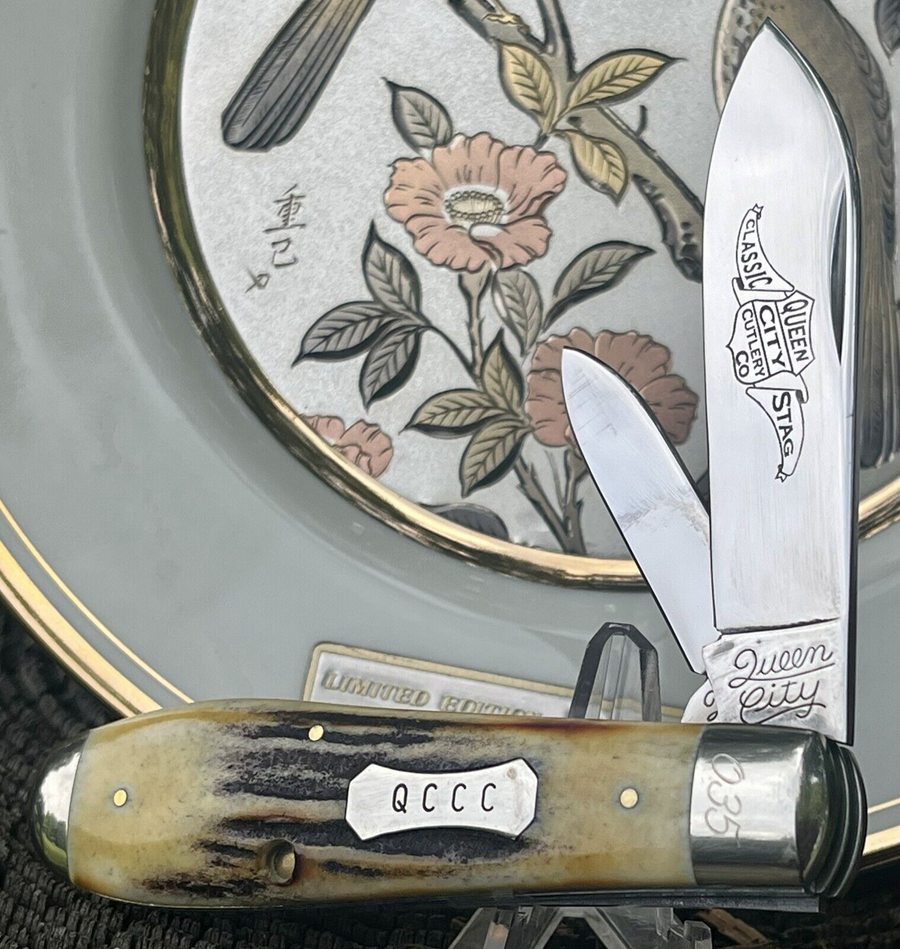
To become an expert in identifying and valuing antique knives, continue expanding your knowledge of knife brands, familiarize yourself with design characteristics specific to each brand, and learn the factors that influence their value in the collector’s market.
Determining the Value of Antique Knives
Condition
Assessing the condition of your antique knife is crucial in determining its value. When evaluating your knife’s condition, consider factors such as:
- Blade sharpness and intactness
- Handle material and damage
- Any signs of rust or corrosion
- Signs of repair or modifications
- Preservation of original features (maker’s mark, logo, etc.)
Typically, knives in better condition fetch higher values.
Rarity
Rarity plays a significant role in antique knife valuation. Keep in mind the following factors:
- Production quantity of a particular model
- Regional or historical significance
- Uniqueness of design, pattern, or materials
A rarer knife usually commands a higher value.
Age
Determining the age of your knife can shed light on its value. Look for clues, such as:
- Maker’s mark or logo
- Style and pattern of the knife
- Materials used in construction
Older knives may have higher values, especially if they are well-preserved.
Demand
Demand is another factor that affects antique knife values. Factors that influence demand include:
- Popularity of a particular brand or maker
- Current market trends
- Collectibility of certain knife styles or types
Higher demand often leads to greater value.
Valuation Table:
| Condition | Rarity | Age | Demand | Value Range |
|---|---|---|---|---|
| Excellent | High | Pre-1900 | High | $$$$ |
| Good | High | Pre-1900 | Moderate | $$$ |
| Fair | Moderate | 1900-1950 | Moderate | $$ |
| Poor | Low | Post-1950 | Low | $ |
By considering these four factors and consulting reputable resources, you can have a better understanding of your antique knife’s value. Remember to keep your expectations realistic and avoid exaggerated claims when discussing values with potential buyers or fellow collectors.
Resources for Antique Knife Collectors
Price Guide Books
As an antique knife collector, there are several price guide books you can refer to for identification and value information. Two of the most notable books include:
- Official Price Guide to Collector Knives, 15th Edition: This comprehensive guide is designed for collectors of all experience levels and contains updated prices, new listings, and photographs of various knives.
- The Standard Knife Collector’s Guide 6th Edition: This essential guide provides detailed identification, values, and collector ratings by condition for a wide variety of knives.
Websites and Online Forums
There are numerous websites and online forums where you can connect with fellow collectors, gain insights about your knives, and ask questions for expert help. Some popular options to consider:
- Bernard Levine’s Knife Collecting & Identification: Moderated by expert Bernard Levine, this forum is an invaluable resource for collectors, providing advice and guidance on knife values and history.
- The International Blade Collectors Association: This association offers useful reference materials, such as their Price Guide to Antique Knives, and supports knowledge sharing among collectors.
Auctions and Dealers
To expand your antique knife collection or sell your items, it’s important to explore auctions and dealers. Some methods for finding these resources include:
- Search: Conduct searches on online auction websites, such as eBay, to find antique knives on offer. Additionally, use search engines to locate nearby brick-and-mortar auction houses and dealers.
- Store visits: Visit local antique or collectible knife shops to establish connections with dealers and other collectors, who can often provide insightful information about knives and their values.
- Auctions and dealers: Look for reputable dealers or auction houses that specialize in antique knives to ensure the authenticity of the products being offered. Reach out to them to discuss your needs, order new items, or find potential buyers.
Remember to keep your search and involvement with dealers, auctions, and online platforms thorough but focused in order to make the most of your collecting experience.
Building and Maintaining Your Collection
Storing and Displaying
When building your antique knife collection, it’s important to store and display them properly to preserve their value and condition. Consider the following tips for storage:
- Keep your knives in a dry location to prevent rust and corrosion.
- Display your knives in glass cases or shadow boxes to protect them from dust and moisture.
- Avoid placing knives in direct sunlight or high humidity areas, as it can cause handle materials to warp or crack.
- Use knife stands or foam inserts to prevent your knives from touching each other, minimizing the risk of scratches or other damage.
Buying and Selling
As a collector, you’ll continually buy and sell vintage knives to enhance and evolve your collection. Here are some tips for making informed decisions:
- Research the market and educate yourself about knife brands, makers, and historic models.
- Attend knife shows to see various types of knives and interact with fellow collectors.
- Utilize trusted sources and dealers when making a purchase, ensuring authenticity and fair pricing.
- Study the maker’s marks, distinctive symbols, or logos on a knife before purchasing to help confirm its origin and age.
- When selling knives, provide detailed descriptions and high-quality photographs to accurately represent the item.
Documenting and Archiving
Proper documentation of your antique knife collection is essential to preserving its value and history. Keep the following elements in mind when archiving your collection:
- Create a detailed inventory, including the knife’s maker, model, measurements, age, provenance, and any known repairs or alterations.
- Include photographs of each knife, capturing the unique features and condition.
- Maintain records of financial transactions, including purchase and sale information, as well as any appraisals.
- Update your archive regularly as you acquire new knives or sell existing ones.
By following these tips and guidelines, you can build a unique and valuable collection of vintage knives that you’ll cherish for years to come. Remember, patience and research are key, and there’s always more to learn in the world of antiques and collectibles.
Final Thoughts
In your journey to identify and value antique knives, it’s essential to pay close attention to details. Keep in mind that maker’s marks, distinctive symbols, and unique designs can be helpful in determining the provenance of the knives.
Remember that antique knives often come with thick metallic blades, wooden or metal handles, carvings, and metal sheaths. Be cautious of signs of aging, as some might be artificially induced to deceive collectors. Trust your instincts and use available resources, such as price guides and collector’s forums, to seek knowledge and advice.
As you build your collection, appreciate the history and craftsmanship behind each piece. By understanding the unique heritage and value of antique knives, you can refine your collection and make educated decisions on acquiring new items. Most importantly, enjoy the process of collecting and learning about these fascinating and functional pieces of art.


